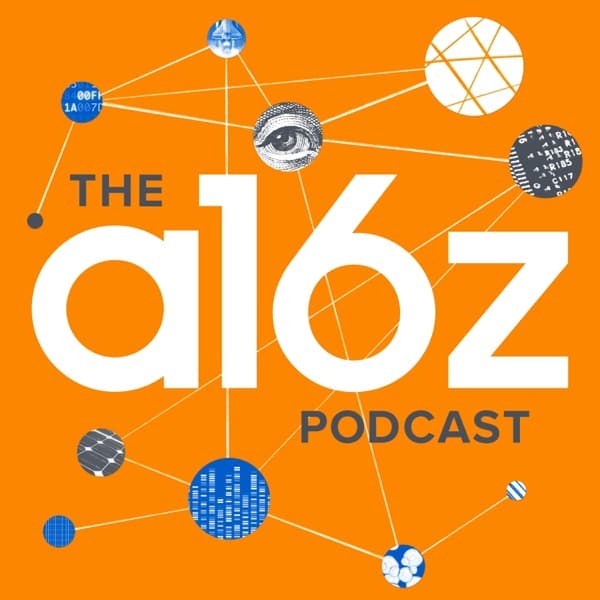Fireship: GPT 4.5's release is underwhelming, offering no significant advancements and being highly expensive.
Latent Space: The AI Engineer Podcast: The podcast discusses BrowserBase, a company providing headless browser infrastructure for AI applications, highlighting its challenges and innovations.
The Twenty Minute VC (20VC): Venture Capital | Startup Funding | The Pitch: The discussion focuses on growth strategies, emphasizing experimentation, hiring for potential, and the importance of velocity over perfection.
Fireship - GPT-4.5 shocks the world with its lack of intelligence...
GPT 4.5, released by OpenAI, is the most expensive AI model to date, costing $150 per million output tokens. Despite its high cost, it fails to surpass benchmarks or introduce new capabilities. The model's main feature is its ability to chat in a more human-like manner, but this is subjective and not universally appreciated. Criticism includes its high expense and limited improvements over previous models. The model also has a lower hallucination rate but still makes errors. OpenAI's future plans involve scaling models with significant financial backing, but current advancements are seen as disappointing. The AI plateau is beneficial for computer science students, as AI coding tools remain useful for skilled programmers.
Key Points:
- GPT 4.5 is the most expensive AI model, costing $150 per million output tokens.
- The model offers no significant advancements or new capabilities, focusing on 'Vibes' for more natural conversation.
- Critics highlight its high cost and limited improvements over previous models.
- OpenAI plans to scale models with substantial financial backing, but current progress is seen as disappointing.
- The AI plateau benefits computer science students, as AI tools are still valuable for skilled programmers.
Details:
1. 🚂 The AI Hype Train Derailed: GPT 4.5's Underwhelming Release
- Open AI's GPT 4.5 is the most expensive AI model released yet it does not surpass existing benchmarks, win awards, or introduce novel capabilities.
- The primary feature of GPT 4.5 is its ability to chat in a more natural, human-like manner, which is marketed as 'Vibes.'
- Despite the high cost, GPT 4.5 fails to outperform previous models in key performance metrics such as language understanding benchmarks, raising concerns about its value proposition.
- The focus on 'Vibes' as a leading feature highlights a shift towards more qualitative improvements, rather than quantitative leaps in AI capabilities.
- GPT 4.5's release suggests a saturation point in current AI development trends, where newer models offer incremental improvements rather than groundbreaking innovations.
2. 🙅♂️ Sam Altman's No-Show: Prioritizing Family Over Launch
- Despite the anticipation, Sam Altman prioritized staying with his newborn over attending the product launch, reflecting a commitment to family over business obligations.
- Interns were sent to handle the product demo, highlighting the importance of delegation and trust within a team, especially during critical events.
- The launch was for Orion, indicating a significant event in the tech industry, yet Altman's choice suggests a shift in traditional leadership roles towards more personal work-life balance.
3. 📉 AI Progress Stagnation: A Disappointing Technological Plateau
- In 2023, tech leaders signed a petition to halt the training of large AI models, indicating significant concerns within the industry about the direction and implications of such technological advancements.
- Sam Altman, a prominent figure in the tech industry, appealed to the government for regulatory measures on AI, underscoring the urgency and seriousness of the situation.
- The release of GPT 4.5 was met with disappointment, suggesting that expectations for advancements in AI capabilities were not met and indicating a possible plateau in AI progress.
- There is speculation about reaching the limits of pre-training in generative transformers, pointing towards a need for new methodologies or innovations in AI development.
4. 💸 Steep Costs of GPT 4.5: A Pricey Benchmark
- GPT 4.5 costs $75 per million input tokens and $150 per million output tokens, significantly higher than Claude's $15 per million tokens, highlighting its expensive nature.
- Access to GPT 4.5 is limited to Pro users at a subscription cost of $200 per month, suggesting a premium positioning.
- OpenAI justifies the high cost with the introduction of the Vibes Benchmark, which aims to measure creative thinking, although the effectiveness of this benchmark remains a subjective matter. The Vibes Benchmark represents an innovative attempt to quantify creativity, but its impact on user experience and cost justification requires further evaluation.
5. 🤖 GPT 4.5's Mixed Capabilities: Natural Vibes with Flaws
- GPT 4.5 exhibits a significantly reduced hallucination rate compared to earlier versions, marking a substantial improvement in accuracy.
- Despite these advancements, GPT 4.5 still experiences occasional errors, such as making silly mistakes, indicating room for further refinement.
- The model lacks self-awareness and does not understand its own identity or version, as it cannot recognize itself as GPT 4.5.
- The training cut-off for GPT 4.5 is set at October 2023, which is essential for understanding the scope of its data coverage.
- An example of its capabilities includes accurately identifying the number of 'R's in the word 'Strawberry', demonstrating its proficiency in specific language tasks.
6. 🔧 Programming Challenges: GPT 4.5's Performance vs. Cost
- GPT 4.5 is less effective in programming and science tasks compared to deep thinking models like 03, indicating a potential gap in its design for these specific areas.
- It performs poorly on the AER polyglot coding Benchmark, being worse at programming than deep seek, which highlights a significant performance issue in coding tasks.
- GPT 4.5 is hundreds of times more expensive than alternatives, despite poorer performance, suggesting that its cost-effectiveness is questionable in scenarios requiring programming efficiency.
- For instance, deep thinking models outperform GPT 4.5 in complex problem-solving and coding tasks, making them more suitable for technical challenges.
- The high cost of GPT 4.5 does not correlate with its performance in programming, as evidenced by its lower benchmark scores and efficiency metrics compared to more specialized models.
7. 🔮 OpenAI's Future and Market Perception: Declining Odds
- OpenAI is currently favored to have the best AI model by the end of 2025, but their odds are declining, indicating growing competition and market skepticism.
- XAI's Gro has surpassed OpenAI's models in the betting markets, suggesting a shift in perception regarding AI leadership.
- OpenAI needs to raise billions for its transition to a for-profit model, requiring it to maintain a high valuation amidst increasing competition.
- Their strategy involves scaling models significantly, relying on substantial investments from entities like SoftBank and Saudi investors to remain competitive.
- There is a growing concern about the ability to improve GPT-5 meaningfully despite increasing parameters and computing power, which could impact OpenAI's strategic positioning.
- GPT 4.5 remains OpenAI's largest model to date, with GPT-5 expected to function more as a routing system, which has been seen as underwhelming by some in the industry.
- The declining odds may influence OpenAI's future fundraising and strategic partnerships, impacting its overall market trajectory.
8. 🎓 Embracing AI Education: Learning with Brilliant
- AI coding tools are most useful to human programmers who have a foundational understanding of programming.
- Brilliant provides a platform with interactive, hands-on lessons that simplify deep learning concepts.
- Users can understand the math and computer science behind AI technology with minimal daily effort.
- The platform offers a 30-day free trial at brilliant.org/fireship.
- It is recommended to start with Python and explore the course on how large language models work for deeper understanding of AI technologies like ChatGPT.
Latent Space: The AI Engineer Podcast - Open Operator, Serverless Browsers and the Future of Computer-Using Agents
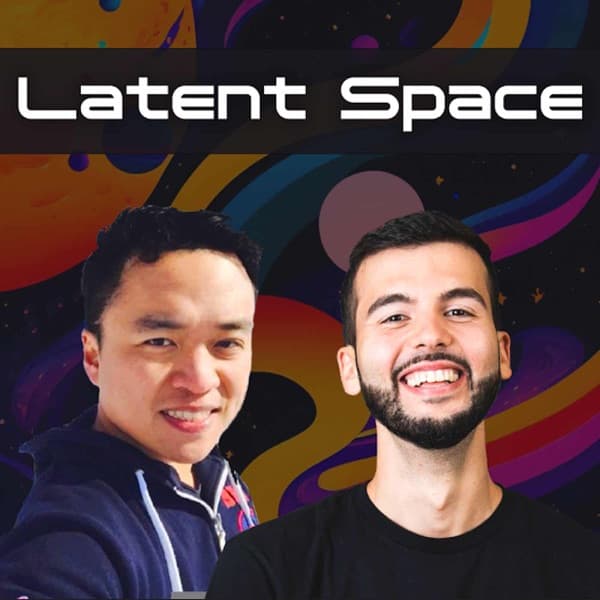
BrowserBase, led by CEO Paul Klein, offers headless browser infrastructure that allows AI applications to automate web interactions. The company has grown rapidly, supporting hundreds of AI companies. Klein emphasizes the complexity of running browsers in the cloud, requiring secure, containerized environments and scalable infrastructure. BrowserBase's infrastructure is crucial for AI to interact with dynamic websites, which often require JavaScript execution to access content. The company also integrates CAPTCHA solvers and proxy networks to enhance web automation reliability. Klein discusses the potential of AI agents and the future of software, envisioning applications that automate tasks on behalf of users. He also highlights the importance of building a strong team and culture as a solo founder, emphasizing in-person collaboration and agency for team members.
Key Points:
- BrowserBase provides scalable headless browser infrastructure for AI applications, enabling automation of web interactions.
- Running browsers in the cloud is complex, requiring secure, containerized environments and scalable infrastructure.
- BrowserBase integrates CAPTCHA solvers and proxy networks to enhance web automation reliability.
- AI agents and the future of software involve applications automating tasks on behalf of users.
- Building a strong team and culture is crucial, with an emphasis on in-person collaboration and agency for team members.
Details:
1. 🎙️ Introduction and Guest Welcome
- The podcast is hosted by Alessio, partner and CTO at Decibel Partners, and Swix, founder of SmallAI.
- The guest is Paul Klein, the fourth CEO of Browserbase.
- Paul Klein has known the hosts for a couple of years, indicating a strong rapport and potential for deeper conversation in the podcast.
2. 🚀 BrowserBase's Growth Journey
- In its first year, BrowserBase expanded from a solo founder to a team of 20, demonstrating significant workforce growth.
- Achieved a Series A funding round, indicating strong investor confidence and financial backing for future endeavors.
- Serves hundreds of AI companies by enabling automated web processes, illustrating its vital role in the AI infrastructure.
- Notable partnerships with leading AI firms have further solidified its market position.
- Product development cycles have been optimized, contributing to faster deployment of new features and enhancements.
3. 🖥️ The Complex World of Browser Infrastructure
3.1. Headless Browser Infrastructure
3.2. AI and Dynamic Web Scraping
3.3. Advanced Automation Frameworks
3.4. Ethical and Technical Considerations
4. 🌐 AI's Role in Web Automation
4.1. Authentication and Agent Tokens
4.2. CAPTCHA Solutions
4.3. Building Trust with User Interface
4.4. Future Directions in Web Path Exploration
5. 🔍 Future of AI Agents and Web Interactions
5.1. Challenges in Web State Management
5.2. Introduction to StageHand Framework
5.3. Market Dynamics and Competition
5.4. StageHand's Position and Use Cases
5.5. Operator and AI Agent Developments
6. ⌨️ Software Automation Evolution
6.1. Automation Use Cases
6.2. Web Scraping and Browser Automation
6.3. Case Study - Benny
6.4. Developer Tooling and Market Dynamics
6.5. Market Opportunities and Collisions
6.6. Operating Systems Versus Browsers
6.7. Future of Software Development
7. 👥 Solo Founder Experience and Company Culture
- Solo founders in Silicon Valley are increasingly common, challenging the traditional belief that a co-founder is essential, as seen with Y Combinator's usual preference.
- Advantages of being a solo founder include faster decision-making, which is crucial for rapid growth, and the ability to integrate both product development and customer interaction.
- Challenges for solo founders include the need to excel in both technical and business domains without the support of a co-founder.
- Company culture in solo-founded firms often differs, with structures like full in-person work from 10 AM to 5-6 PM, Monday to Friday, fostering a cohesive team environment.
- Solo founders heavily influence company culture, emphasizing the importance of a strong team with agency and ownership to drive success.
- The company prioritizes in-person work but offers flexibility, allowing employees to explore personal projects over weekends.
- Recruitment strategies focus on personal referrals and targeted outreach, particularly through platforms like Hacker News, rather than broad messaging.
- Unique cultural elements include a run club and a diverse mix of employees from various career stages, creating a supportive and dynamic work environment.
- Empowerment through innovation is encouraged, as team members are allowed to present weekend projects, fostering a culture of creativity and initiative.
The Twenty Minute VC (20VC): Venture Capital | Startup Funding | The Pitch - 20Growth: Inside Ramp's Growth Engine: How Ramp Became the Fastest Growing SaaS Company Ever | What Worked & What Did Not Work | How to Hire for Growth | How to Find Alpha in Channels Where No One Else Can with George Bonaci

The conversation highlights the importance of experimentation in growth strategies, suggesting that growth is akin to science where hypotheses are formed and tested through various experiments. The speaker emphasizes the need for a balance between high-risk, high-reward experiments and smaller, incremental improvements. They argue that velocity in experimentation is crucial, even if it means some sloppiness, as it allows for faster learning and adaptation. The discussion also touches on the importance of hiring for potential rather than experience, especially in early-stage companies, and suggests that growth teams should be independent to effectively drive business growth. The speaker shares insights on finding unique growth opportunities, such as exploring underutilized channels like direct mail or influencer marketing in B2B contexts. They also discuss the role of AI in growth, suggesting it can aid in efficiency but may not yet replace the need for human-driven innovation and strategy.
Key Points:
- Experimentation is key to growth; balance high-risk and incremental improvements.
- Hire for potential, not just experience, especially in early stages.
- Velocity in testing is crucial; prioritize speed over perfection.
- Explore unconventional growth channels like direct mail and B2B influencer marketing.
- AI can enhance efficiency but human strategy remains essential.
Details:
1. 🔍 Uncovering Alpha: Innovative Business Strategies
- Alpha can be achieved by engaging in unique practices unknown to competitors, offering a competitive edge that is difficult to replicate.
- Pursuing strategies that are widely dismissed or doubted can yield significant advantages, as these approaches often face less competition and can carve out niche markets.
- Leadership requires a comprehensive understanding of team roles, even if executed imperfectly, as this fosters adaptability and resilience within the team.
- Examples include companies that have succeeded by embracing unconventional marketing strategies or by investing in overlooked technologies, demonstrating the power of differentiation.
- Implementation in real-world scenarios involves thorough market research to identify gaps and opportunities that competitors have overlooked.
2. 📈 20 Growth with Harry Stebbings: Meet George Bonacci
- George Bonacci, VP of Growth at R Samsara, played a pivotal role in increasing revenue from $100 million to $650 million ARR.
- He was instrumental in R Samsara's successful IPO, showcasing his expertise in scaling operations and preparing companies for public offerings.
- Bonacci's strategic initiatives involved leveraging data-driven marketing techniques and optimizing sales channels to achieve these results.
- By focusing on customer segmentation and personalized engagement strategies, Bonacci significantly improved customer acquisition and retention metrics.
3. 🔒 SecureFrame: Simplifying Security and Compliance
- SecureFrame empowers businesses to build trust with customers by simplifying information security and compliance through AI and automation.
- SecureFrame automates over 70% of the compliance process, reducing the time and resources needed for audits.
- The platform uses AI to continuously monitor security controls, ensuring compliance standards are met in real-time.
- SecureFrame's approach has led to a 50% reduction in time required to achieve compliance certification, significantly accelerating the process for businesses.
- By providing real-time insights and automated updates, SecureFrame enhances the ability of businesses to maintain ongoing compliance and improve security postures.
- Over 1,000 companies have successfully achieved compliance using SecureFrame, showcasing its effectiveness in the industry.
4. 💡 Accelerating Innovation with Miro
- More than 80% of innovation projects stall before execution due to outdated processes, context switching, and misalignment.
- Miro's Innovation Workspace aims to accelerate idea execution with AI-powered tools that provide on-demand design, analysis, and engineering support.
- AI sidekicks and instant AI summaries help condense meeting notes, product briefs, and retrospectives rapidly, enhancing speed and efficiency.
- The two-way sync feature with Jira and Azure ensures updates in Miro are automatically reflected in development tools, reducing duplication and miscommunication.
5. 🚀 Growth as a Scientific Discipline: Experimentation and Strategy
- Growth in business is likened to a scientific process, requiring hypothesis formation and experimentation.
- Marketers often struggle because they rely on past successful playbooks without adapting them to new contexts.
- Every business is unique, and past strategies cannot be blindly applied to new companies.
- Effective growth requires identifying repeatable, predictable channels for lead generation.
- Experimentation in growth strategies can yield surprising results, both in terms of what works and what doesn't.
- For example, a company shifted from traditional advertising to digital channels and saw a 70% increase in engagement.
- A successful growth strategy must include a feedback loop to refine hypotheses and improve tactics.
- Case studies show that businesses embracing experimentation see a 30% faster growth rate compared to those that do not.
6. 🧠 Navigating Growth Challenges: Insights and Strategies
6.1. Incremental Improvements and Transformational Changes
6.2. Cross-Functional Teams and Diverse Thinking
7. 🎧 Wrapping Up and What's Next on 20VC
- SecureFrame simplifies information security and compliance through AI and automation, used by NASDAQ and AngelList to achieve standards like SOC 2 and ISO 27001.
- SecureFrame has been recognized by Forbes, G2, and the Cybersecurity Excellence Awards, indicating its industry impact and trustworthiness.
- Over 80% of innovation projects fail due to outdated processes and misalignment; Miro addresses this with its Innovation Workspace.
- Miro's AI-powered tools, such as AI sidekicks and instant AI summaries, boost team productivity and integrate seamlessly with Jira and Azure for real-time updates.
- Miro's workspace accelerates the transition from idea to execution and serves various teams including product, UX, and engineering.
- Upcoming episode with Anthropic CPO Mike Krieger is announced for Monday.
Included Channels
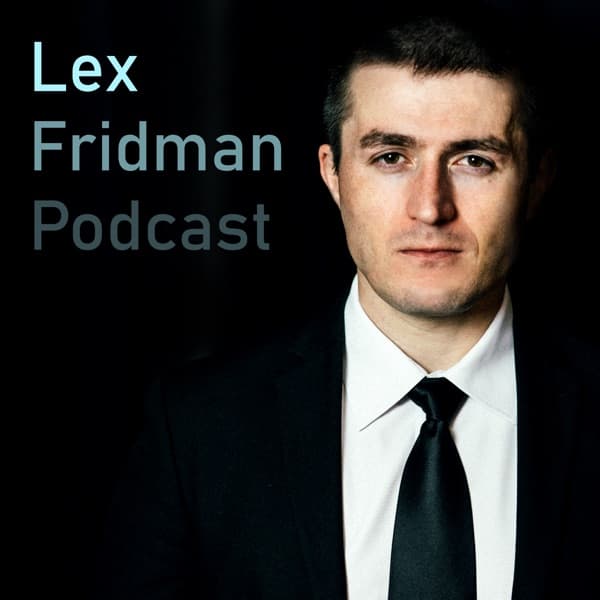 Lex Fridman Podcast
Lex Fridman Podcast All-In with Chamath, Jason, Sacks & Friedberg
All-In with Chamath, Jason, Sacks & Friedberg Modern Wisdom
Modern Wisdom Greymatter
Greymatter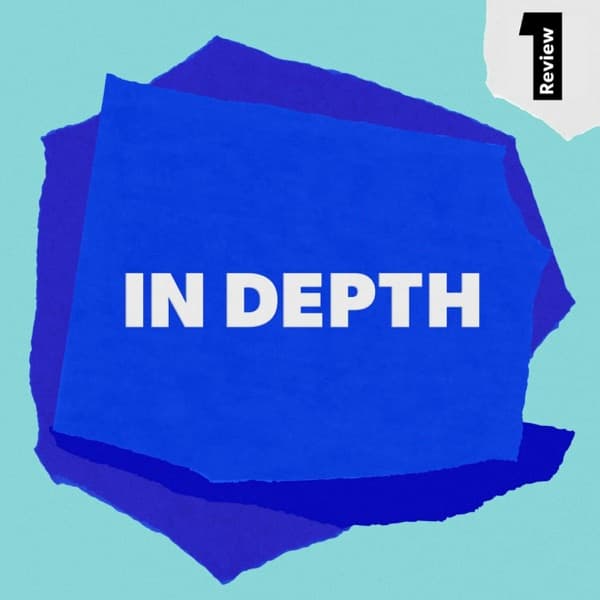 In Depth
In Depth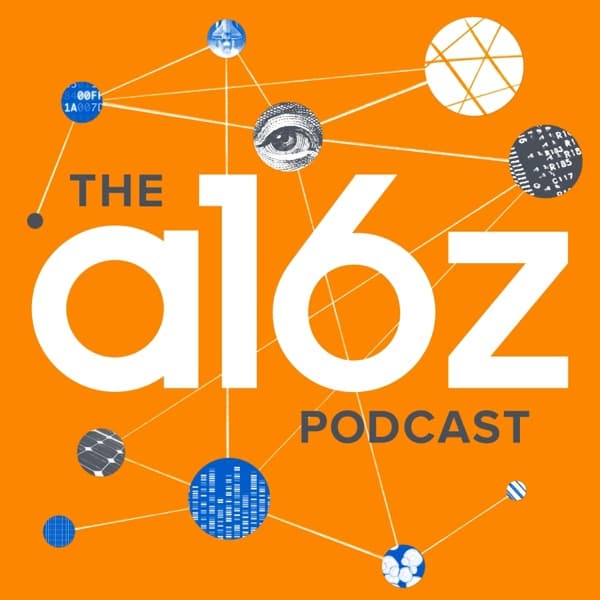 a16z Podcast
a16z Podcast Lenny's Podcast: Product | Growth | Career
Lenny's Podcast: Product | Growth | Career Lightcone Podcast
Lightcone Podcast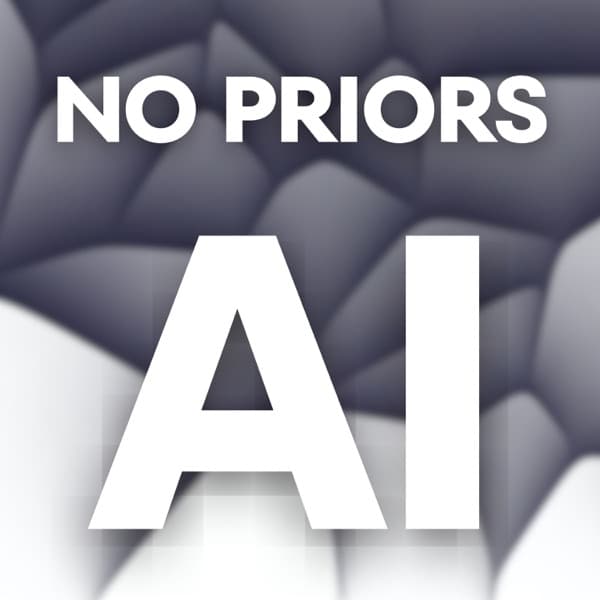 No Priors AI
No Priors AI The Twenty Minute VC (20VC): Venture Capital | Startup Funding | The Pitch
The Twenty Minute VC (20VC): Venture Capital | Startup Funding | The Pitch How I Built This with Guy Raz
How I Built This with Guy Raz BG2Pod with Brad Gerstner and Bill Gurley
BG2Pod with Brad Gerstner and Bill Gurley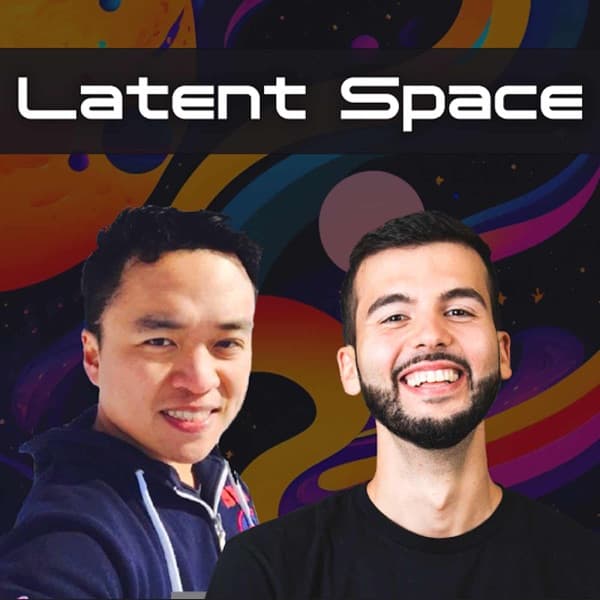 Latent Space: The AI Engineer Podcast
Latent Space: The AI Engineer Podcast




